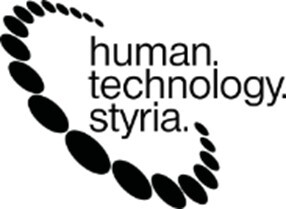Recent advances in medical Point Of Care Testing (POCT) have significantly transformed diagnostic capabilities across healthcare settings.
Let’s have a look at the related topics:
- Most notable developments as of 2025
- How is AI improving the accuracy of point-of-care blood tests
- What role does microfluidics play in advancing POCT devices
- How are portable POCT devices changing emergency healthcare workflows
The following are the most notable developments as of 2025
Miniaturization and Portability: Devices have become smaller and more portable, enabling quick, on-the-spot testing in diverse environments including bedside, ambulances, remote locations, and even patients’ homes. This leads to faster diagnosis and quicker clinical decision-making.
Integration of Advanced Technologies: Modern POCT devices increasingly leverage artificial intelligence (AI), machine learning, and the Internet of Things (IoT). AI algorithms analyze results for greater accuracy and consistency, while IoT integration enables real-time data sharing and remote monitoring through seamless connectivity to electronic health records (EHR).
Advanced Biosensors and Microfluidics: Novel biosensors, including those based on electrochemical and nanomaterial technologies, combined with microfluidic chips, now allow sensitive, specific, and rapid detection of a wide range of biomarkers from small sample volumes. These innovations drive the development of multiplexing platforms that can test for multiple diseases or biomarkers simultaneously, improving efficiency and reducing turnaround time.
Disposable and Single-Use Devices: The adoption of disposable cartridges and single-use sensors enhances infection control and workflow efficiency, particularly important for infectious diseases and high-throughput testing environments.
CRISPR-Based and Molecular Diagnostics: Portable molecular platforms utilizing CRISPR and isothermal amplification are making nucleic acid testing—and therefore rapid COVID-19, flu, or other pathogen detection—possible at the point of care, with performance rivalling centralized labs.
Enhanced Connectivity and Digital Health Integration: POCT devices now frequently include Bluetooth or Wi-Fi, allowing for data to be instantly transferred to EHRs or cloud servers. This supports not only immediate clinician review but also remote telemedicine and chronic disease management, especially in resource-limited settings.
Wearable and Non-Invasive Technologies: The convergence of POCT with wearable sensors enables continuous and non-invasive monitoring (for glucose, cardiac biomarkers, etc.), broadening clinical application and supporting personalized medicine.
AI-Powered Imaging and Interpretation: Deep learning and image processing are increasingly used in POCT devices (such as skin cancer scanners or portable blood analyzers) to automate result interpretation and enhance diagnostic accuracy at the patient’s side.
Expanded Test Menus: Multiplexed analyzers and platforms now offer a wider variety of tests (blood counts, cardiac markers, infectious agents, etc.) on a single device, reducing the need for multiple instruments.
Key advances include: device miniaturization, AI and machine learning integration, microfluidic and biosensor breakthroughs, disposable and single-use designs, CRISPR-based molecular assays, enhanced connectivity, and digital health platforms.
How is AI improving the accuracy of point-of-care blood tests
AI is improving the accuracy of point-of-care (POC) blood tests primarily through enhanced precision in analysis, reduction of human error, and faster, more reliable result interpretation.
Key ways AI contributes include:
Pattern Recognition and Anomaly Detection: AI algorithms, especially those based on machine learning and deep learning, meticulously analyze blood test data to identify subtle patterns and abnormalities that traditional human analysis might miss. This leads to earlier and more accurate disease detection, improving patient outcomes.
Standardization and Consistency: AI standardizes test result interpretation, minimizing variability caused by user experience or subjective visual reading, such as reading faint test lines in lateral flow assays (LFIAs). For example, deep-learning algorithms applied in HIV LFIA tests increased sensitivity to 97.8% and specificity to 100%, outperforming human interpretation.
Automated Image Analysis: AI-powered image processing automates the microscopic analysis of blood samples (e.g., for malaria or anemia detection), ensuring high accuracy. AI mitigates errors inherent in manual microscopy, delivering consistent performance even in low-resource settings.
Integration of Multi-Modal Data: Advanced AI models can combine blood test results with genetic, lifestyle, and medical history data to provide a holistic health assessment, enabling early warnings for complex diseases such as diabetes, cardiovascular conditions, and cancers.
Continuous Learning and Improvement: AI systems evolve by learning from growing datasets, which enhances diagnostic accuracy over time and makes future POC blood tests increasingly reliable.
Speed and Efficiency: AI significantly reduces the time required to analyze blood samples—from hours or days to minutes—allowing for rapid clinical decision-making and timely patient management.
What role does microfluidics play in advancing POCT devices
Microfluidics plays a crucial role in advancing point-of-care testing (POCT) devices by enabling highly integrated, automated, and miniaturized systems that improve diagnostic efficiency and accessibility.
Key contributions of microfluidics to POCT include:
Miniaturization and Integration: Microfluidic chips can incorporate multiple analytical steps—sample preparation, reaction, separation, and detection—onto a single compact platform known as lab-on-a-chip. This reduces device size, reagent consumption, and the need for bulky equipment, making diagnostics feasible outside traditional labs.
Automation and Efficiency: Microfluidic systems offer a high degree of automation in fluid handling and biochemical processes, minimizing human intervention and contamination risks. This allows for rapid, reproducible, and precise testing valuable in urgent or resource-limited settings.
Reduced Sample and Reagent Volume: These devices require very small volumes of samples and reagents, which lowers costs and makes testing more practical in situations where resources are scarce or sample collection is challenging.
Enhanced Sensitivity and High-Throughput: Microfluidic platforms enable sensitive detection and the ability to run multiple tests or multiplex assays simultaneously on a single chip, increasing throughput and expanding diagnostic capabilities for various biomarkers or pathogens.
Versatility and Portability: Microfluidic POCT devices are portable and can be adapted for diverse applications, from infectious disease detection to chronic disease monitoring and even wearable health diagnostics, supporting personalized and remote healthcare delivery.
Advanced Fabrication Techniques: Emerging fabrication methods like 3D printing accelerate prototyping and commercialization of microfluidic POCT devices, further enhancing accessibility and scalability.
Centrifugal Microfluidics (Lab-on-a-Disc): A subfield that uses rotational mechanics to control fluid movement precisely without external pumps, facilitating automated and rapid assays ideal for field or emergency use.
How are portable POCT devices changing emergency healthcare workflows
Portable point-of-care testing (POCT) devices are significantly transforming emergency healthcare workflows by enabling rapid, on-site diagnostic testing that bypasses the delays associated with central laboratory processing. This leads to faster clinical decision-making, improved patient triage, and earlier initiation of treatment in emergency settings.
Key ways portable POCT devices change emergency workflows include:
Rapid Diagnosis and Faster Turnaround Times: POCT provides test results within minutes instead of hours, which is critical for acute conditions like sepsis, acute coronary syndromes, stroke, and infectious diseases. This immediacy allows clinicians to quickly confirm diagnoses and begin appropriate interventions without waiting for central lab results.
Improved Patient Throughput and Reduced Length of Stay: Faster testing accelerates patient evaluation and management, reducing emergency department overcrowding, minimizing hospital admission times, and shortening patient stays. For example, POCT for biomarkers like C-reactive protein (CRP) and cardiac troponin hastens decision-making and discharge processes.
Decentralization and Accessibility: Portable POCT devices empower healthcare providers to perform tests at the bedside, in ambulances, or remote locations, eliminating the need to transport samples to central labs. This decentralization enhances care in resource-limited or pre-hospital settings, enabling timely interventions even before hospital arrival.
Streamlined Clinical Workflow: With simple operation and minimal training requirements, POCT devices enable non-laboratory staff to conduct testing, allowing clinical teams to integrate diagnostics smoothly into standard emergency care practices. This aids efficient resource management, reduces follow-up calls, and optimizes staff workload.
Cost-Effectiveness and Resource Optimization: Studies show POCT reduces overall diagnostic costs by lowering the number of unnecessary tests, minimizing delays that extend hospital stays, and optimizing the use of medical equipment and space in emergency units.
Enhanced Patient Management and Outcomes: By providing rapid and reliable diagnostic data, POCT facilitates early targeted therapies, improving outcomes in critical conditions. For pediatric emergencies, POCT assists in rapid infection source identification and risk stratification, further supporting effective care.
Summary
POCT innovations are making diagnostics faster, more accessible, and more accurate, supporting timely interventions that can improve patient outcomes, particularly in emergency, remote, or resource-limited settings.
AI enhances POC blood test accuracy by providing precise, consistent, and rapid analysis that surpasses human capability, improving diagnostic reliability especially in critical and resource-limited settings. This integration of AI technology is leading to innovative point-of-care devices and applications with high sensitivity and specificity across a variety of blood tests.
Microfluidics transforms POCT by providing compact, cost-effective, automated, and rapid diagnostic solutions that bring laboratory-level precision to the point of care, particularly benefiting underserved and remote areas.
Portable POCT devices revolutionize emergency healthcare workflows by delivering faster, bedside diagnostic results that improve timeliness, efficiency, and quality of care while reducing costs and enabling effective patient management from pre-hospital through emergency and critical care settings.
Related Links
https://www.genspeed-biotech.com/?page_id=27&lang=en
https://www.einfochips.com/blog/current-and-emerging-trends-in-point-of-care-testing-poct-devices
https://www.europeanhhm.com/articles/point-of-care-testing-technologies-whats-new-and-whats-next
https://iconiferz.com/point-of-care-testing-technology-advancements-2025
https://www.nature.com/articles/s41467-025-58527-6
https://www.sciencedirect.com/science/article/pii/S2543106425000018
https://pubs.acs.org/doi/abs/10.1021/acs.analchem.4c07075
https://noul.com/en/board_news_blog/blood-testing-for-europe-point-of-care
https://www.sciencedirect.com/science/article/pii/S2950160125000063
https://www.getlabtest.com/news/post/beyond-numbers-how-ai-is-revolutionizing-blood-test-analysis
https://pmc.ncbi.nlm.nih.gov/articles/PMC10151281
https://noul.com/en/board_news_blog/accurate-point-of-care-testing-device
https://itbrief.co.uk/story/ai-diagnostics-reshaping-healthcare-through-accuracy-speed
https://pubs.rsc.org/en/content/articlelanding/2025/lc/d4lc00779d
https://pmc.ncbi.nlm.nih.gov/articles/PMC8875995
https://pmc.ncbi.nlm.nih.gov/articles/PMC8769924
https://en.seamaty.com/index.php?s=%2Fsys%2F329.html
https://pmc.ncbi.nlm.nih.gov/articles/PMC11891844
https://biomedres.us/pdfs/BJSTR.MS.ID.009665.pdf
https://oss.signavitae.com/mre-signavitae/article/20220507-150/pdf/SV2021082702.pdf
https://www.grgonline.com/post/transforming-healthcare-the-role-of-point-of-care-testing-in-canada












